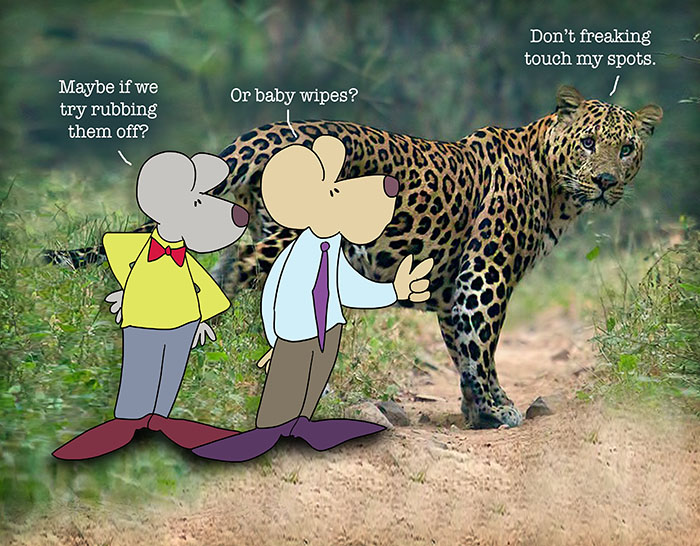Of course, we can change. We do it all the time.
However, some of the things about us seem intrinsic — deeply embedded, and harder to change.
We all know that proverbial saying:
“A leopard cannot change its spots.”
It expresses the notion that things cannot change their innate nature. Mostly, it is used to suggest that “people who have done bad things will always be bad people.”
The origin surprised me. It comes from the bible by way of Jeremiah 13:23 (King James Version). It says:
“Can the Ethiopian change his skin, or the leopard his spots? Then may ye also do good, that are accustomed to do evil.”
While the leopard may not be able to change, it is a good thing Noah loaded up his ark in the book of Genesis. Because there are plenty of animals who show us how easy it might be to change. Like the chameleon. Our Go-To Shape-Shifter.
Those chameleons are unique lizards, if you ask me. They are famous for swapping their skin color, allowing them to merge right in with their surroundings. Which begs the question — are they introverts or extroverts? I often wish I could disappear right into the nearest wall when I’m out at a gathering.
Anyway, chameleons will sometimes change their color when angry or fearful. Yet, sometimes it isn’t emotional for them. It is physical. They will change color in response to humidity, light, and temperature. They simply adjust a special layer of cells under their skin. Clap on. Clap off.
So. I guess they have one up on the leopard. Perhaps they are the ultimate Zen being, changing as they go.
But wait. Don’t forget the world-class Mimic Octopus. We saw a version of this in the movie “Finding Dory.” That cool guy Hank. And technically, he’s a ‘septopus’ because he lost a tentacle. He only has seven.
In real life, though, the mimic octopus is scientifically known as Thaumoctopus mimicus. In my opinion, they top the chameleon, because they can change their color easy-peasy. But they also mimic other sea creatures such as lionfish, jellyfish, stingrays, and sea snakes.
So, it isn’t like they are sitting on some leaf and turn the color of that leaf, as we see in the chameleon. Nope. Instead, the mimic octopus can pick the color of the sea creature that they intend to mimic from afar. Then, presto, change-o. They change their body shape to avoid potential predators. And, of course, the new skin color helps them adapt to their surroundings. “Oh, I’m in love with a big blue frog.”
Yet, back to the leopard. Changing its spots seems easy in comparison to what some animals do. Quite a few can change their sex.
Cardinals are one. And when they flip their sex, it is called “Bilateral gynandromorphism.” But as you guessed, the bilateral suggests two sets. And when this manifests, they get bi-colored. They have brown-gray “female” feathers on one half and bright red “male” feathers on the other. According to the scientists who study them, they not only look different, but they also act differently. They are never seen mating. But. There is a plus side. Unlike a whole lot of humans, other cardinals seemed to accept them even though they are bi. Those researchers never witnessed it being mistreated.
Frogs apparently can turn things around too. For years, researchers have observed frogs spontaneously changing sex in the lab. But recently, they have done the same studies in the wild. And these froggy sex changes are complete with fully functioning reproductive organs. They say it is fairly commonplace among green frog populations. So. Be careful who you kiss, if those things matter to you.
There are many other animals that change in this way, from butterflies to banana slugs.
As far as human change goes. I am certain we can change our sex if we want to. And probably our color, too.
But we all know what matters most sometimes. That change inside. Are we ever-evolving in our awareness of this life? Or are we still stuck in our 16-year-old mentalities? I can attest, I have seen both varieties of humans in the wild. And neither is an uncommon occurrence. Thankfully, and sadly.
=========
“If I am not for myself, who will be for me? But if I am only for myself, what am I? And if not now, when? – Hillel
=========
“True life is lived when tiny changes occur.” ― Leo Tolstoy
==========
“A bend in the road is not the end of the road… Unless you fail to make the turn.” ― Helen Keller
=========
I can spot someone trying to change
